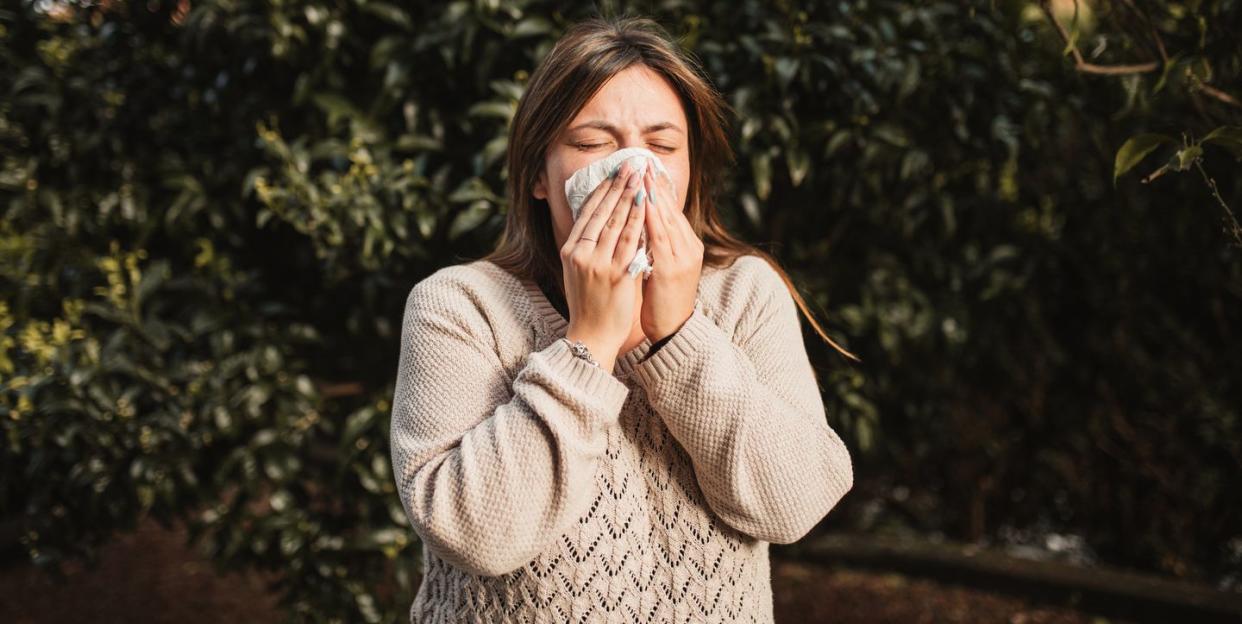You could face hay fever symptoms sooner this year

Hay fever sufferers have been warned that the first ‘pollen bomb’ of the year is arriving this month - weeks earlier than usual.
It is one of the most common allergies in the UK, and research carried out by Allergy UK in 2020 found that 49% of Brits have reported experiencing uncomfortable hay fever symptoms, which can include sneezing, a blocked nose, itchy throat, and swollen, red, watery eyes.
But this year, the tissues and antihistamines will be coming out sooner, as Birch trees, which are the first to offload pollen, will be shedding their spores two weeks ahead of schedule. It's the result of our changing climate, according to the UK Health Security Agency.
Max Wiseberg, an expert in airborne allergens, told The Pembrokeshire Herald: 'Birch is arguably the most problematic tree of them all for hay fever sufferers.'
This is bad news for the 25% of the UK population who suffer allergy related symptoms as a result of the Birch tree, per Allergy UK.
With increasing temperatures and rainfall across the UK, grass pollen season, which typically runs from May through July, may be prolonged, meaning more pollen is released than usual. The changes in pollen release for birch and grass pollen may indicate climate change adaptation, according to research published by Science Direct.
'Pollen bombs' got their name as when there is a release of a large amount of pollen from trees in a short space of time, the pollen mimics smoke as it travels through the air.
Pollen is naturally released during periods of warm weather and high pressure, where the weather is settled with light winds, meaning that pollen can be dispersed. Levels will remain higher during the early morning and late evening, according to ITV meteorologist Chris Page.
Managing hay fever symptoms
According to the Met Office UK:
Smartphone apps can give hay fever sufferers forecasts of pollen levels, so you know when to venture out and when to stay indoors.
Wearing wraparound sunglasses can prevent the pollen from getting into your eyes, tacking that puffy redness.
Keeping on top of household chores like hoovering and dusting can reduce the amount of pollen lingering in your home.
Related stories
Become a member of the Women's Health Collective and get full access to the Women's Health app, available to download on Google Play and the App Store, to get the latest workouts and fitness content.
You Might Also Like


